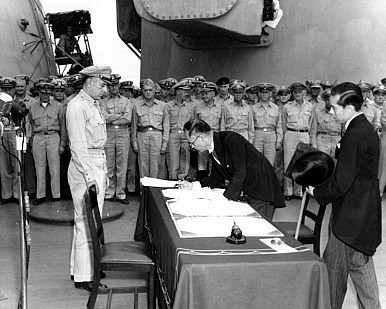July 7, 1908 – USS Decatur, Batangas Harbor, Philippines: The USS Decatur, the first destroyer commissioned in the U.S. Navy, ran aground on a sandbar as it entered Batangas Harbor. Chester Nimitz, the 22-year-old officer in command of the ship, was humiliated in front of his crew – the majority of whom were 10-15 years older than he.
Nimitz worried about the potential Navy repercussions for such an incompetent act. It took almost 24 hours for the ship to be freed from the bar and these were the longest 24 hours of Chester Nimitz’s life. Two weeks later he was relieved of his duties.
The Decatur investigation determined that Nimitz carelessly estimated his position, rather than verifying his bearings, and he failed to check the tidal charts. Although not entirely his fault, Nimitz took full responsibility for the incident. He was court-martialed and found to be “neglect of duty,” publicly reprimanded, and assigned to submarines – in that era not an assignment any Naval officer coveted.
Chester Nimitz’s father died six months before his birth in Fredericksburg, Texas in February 1885. He got his love of the sea from his grandfather, Charles Nimitz, a crusty, bearded German who had gotten his sea legs as a merchant seaman in Germany before immigrating to Texas in 1844. Young Nimitz would sit on the steps of his grandfather’s steamboat-shaped Nimitz Hotel and listen to tales of the sea.
He graduated seventh in his class of 114 at the U.S. Naval Academy – one of the best and brightest this country had to offer. Impressed with his leadership and competence, the Navy promoted him right out of Annapolis to Ensign and assigned him the command of the USS Decatur.
Following the Decatur incident, Nimitz served aboard four different submarines between 1908 and 1915. Three years later, he got his first opportunity on board a big battleship, the USS South Carolina where he served as Executive Officer. Over the next two decades, he rose steadily through the Navy hierarchy, achieving the rank of Rear Admiral in 1938.
A week after the Japanese attacked Pearl Harbor in December 1941, President Franklin Roosevelt phoned Secretary of the Navy Frank Knox: “Tell Nimitz to get the hell to Pearl and stay there until the war is won.” On Christmas Day 1941, Nimitz became Supreme Allied Commander of the Pacific Ocean area.
At Pearl Harbor, the 56-year-old admiral inherited a disaster – 2,000 men dead, destroyed ships and planes, and a demoralized military base. Keenly aware of the second chance he had once received, and realizing the Sunday morning attack could not have been predicted, Nimitz retained the entire staff of officers. It proved to be a brilliant decision.
Nimitz found the silver lining in the Pearl Harbor disaster. The three aircraft carriers weren’t destroyed, and the Japanese had failed to bomb the fuel tanks. He utilized the airplanes from the carriers to make quick bombing strikes on Japanese strongholds in the southwest Pacific Islands. The success bolstered American morale.
Over the next three years, Nimitz commanded both land and sea operations in the Pacific Theater – a force of two million men and 1,000 ships – and took the fight to the Japanese. On September 2, 1945, he accepted the Japanese letter of surrender aboard his flagship the U.S.S. Missouri in Tokyo Bay, Japan.
December 15, 1945: Thirty-seven years after running the USS Decatur aground – a possible career-ending incident – Chester Nimitz was promoted to Chief of Naval Operations, the most senior officer in the United States Navy. He served there until his retirement in 1947.
“God grant me the courage to not give up what I think is right even though I think it is hopeless.” Chester Nimitz

Love the story.
Saved that quote for motivation and sharing…looking forward to seeing ya’ll at the party!!!